Is aquaculture better than commercial fishing?
Are you worried about the future of seafood? Wild fish stocks are dropping fast. This makes many people wonder how we will feed everyone.
Aquaculture, or fish farming, is now the main way we get seafood. It gives us a steady and controlled supply. This helps ease pressure on wild fish and creates jobs in many areas.
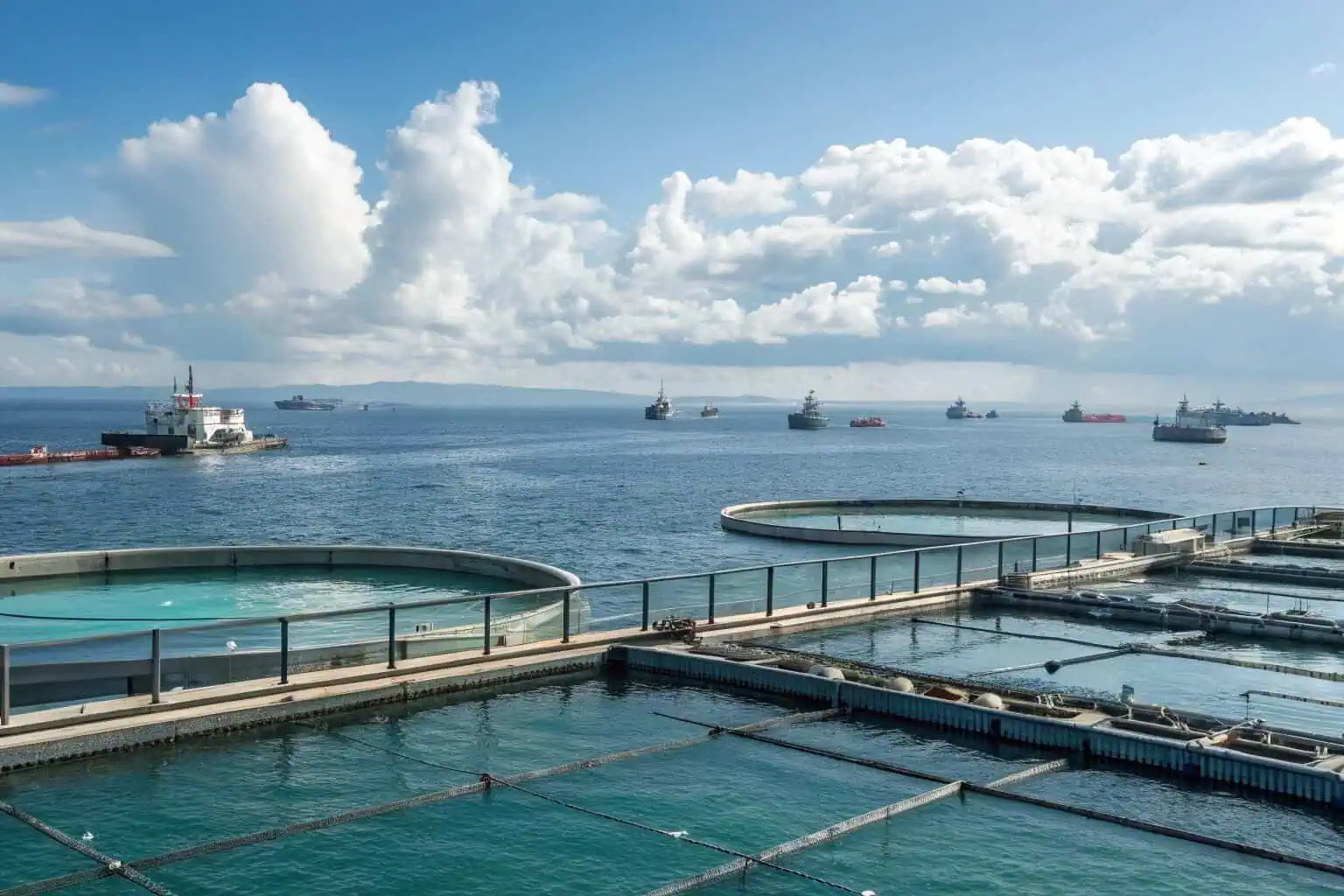
As someone who has watched the seafood industry closely, I see a big change happening. Fish farming is now more important than catching wild fish. This shift is good for many reasons.
Why is aquaculture better than fishing?
Do you want to know why fish farming is growing so fast? Many people are looking for new ways to get food. This is especially true for seafood.
Aquaculture offers a stable and controlled food source. It helps reduce overfishing and creates jobs. It also has a lower carbon footprint than traditional farming.
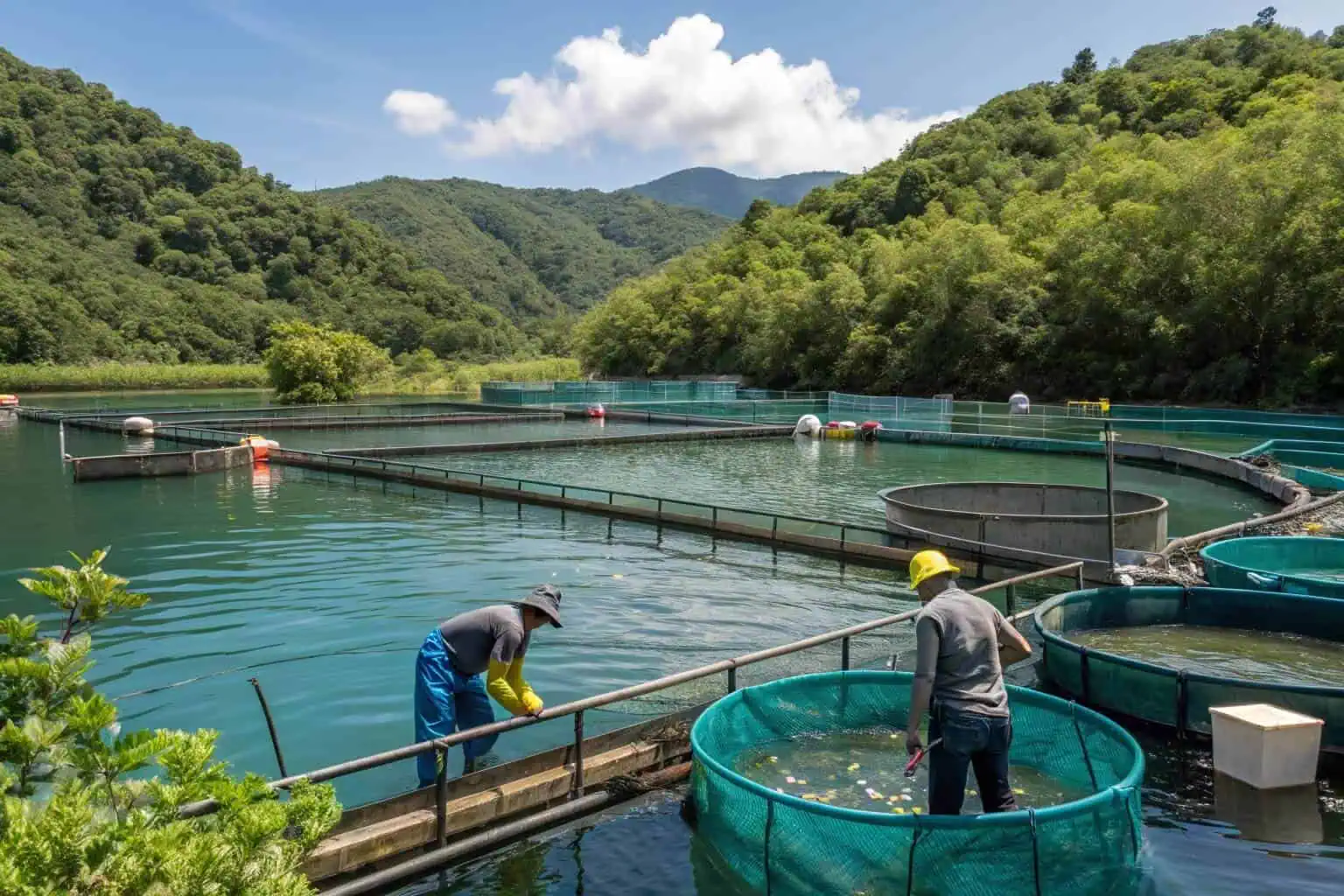
From my view, aquaculture has a lot of good points. It gives us a steady supply of seafood. This is important because wild fish numbers are going down. Fish farming can happen all year. This means we always have fish available. It also helps local areas by creating jobs and bringing in money. For example, I have seen how fish like Tilapia and Catfish grow fast. They are in high demand. This makes them very good for new farmers. These fish are easy to raise in small farms. They offer good profits. Also, fish farming uses less land and water than raising animals on land. This makes it better for the environment. We can control how fish grow. We can also control their food and health. This leads to better quality fish. It also means less waste. This is a big step forward for food production. We can also use new methods, like integrated systems1, to make it even better. These systems help clean the water and reuse nutrients. This makes fish farming2 more sustainable. It is a way to get food that can last a long time.
Stable Supply and Job Creation
Aquaculture provides a constant source of seafood3. This helps meet the growing demand for fish. It also creates many jobs. These jobs are in farming, processing, and sales. This helps local economies grow. It gives people steady work.
Environmental Benefits
Fish farming can be better for the environment than other types of farming. It often has a smaller carbon footprint. This means it releases less greenhouse gas. It also uses less land and water. This helps protect natural resources.
High-Profit Species
Some fish species are very profitable to farm. Tilapia and Catfish are good examples. They grow quickly. They are also popular with consumers. This means farmers can make good money from them. These fish are good for new farmers.
| Species | Growth Rate | Market Demand | Profitability |
|---|---|---|---|
| Tilapia4 | Fast | High | High |
| Catfish5 | Fast | High | High |
| Shrimp | Medium | Very High | Very High |
What are the disadvantages of aquaculture?
Is fish farming always good? Some people worry about its downsides. It is important to look at both sides.
Aquaculture can lead to problems like disease spread and antibiotic use. This can harm the environment and wild fish. It also faces issues with gene pollution and needing a lot of feed.
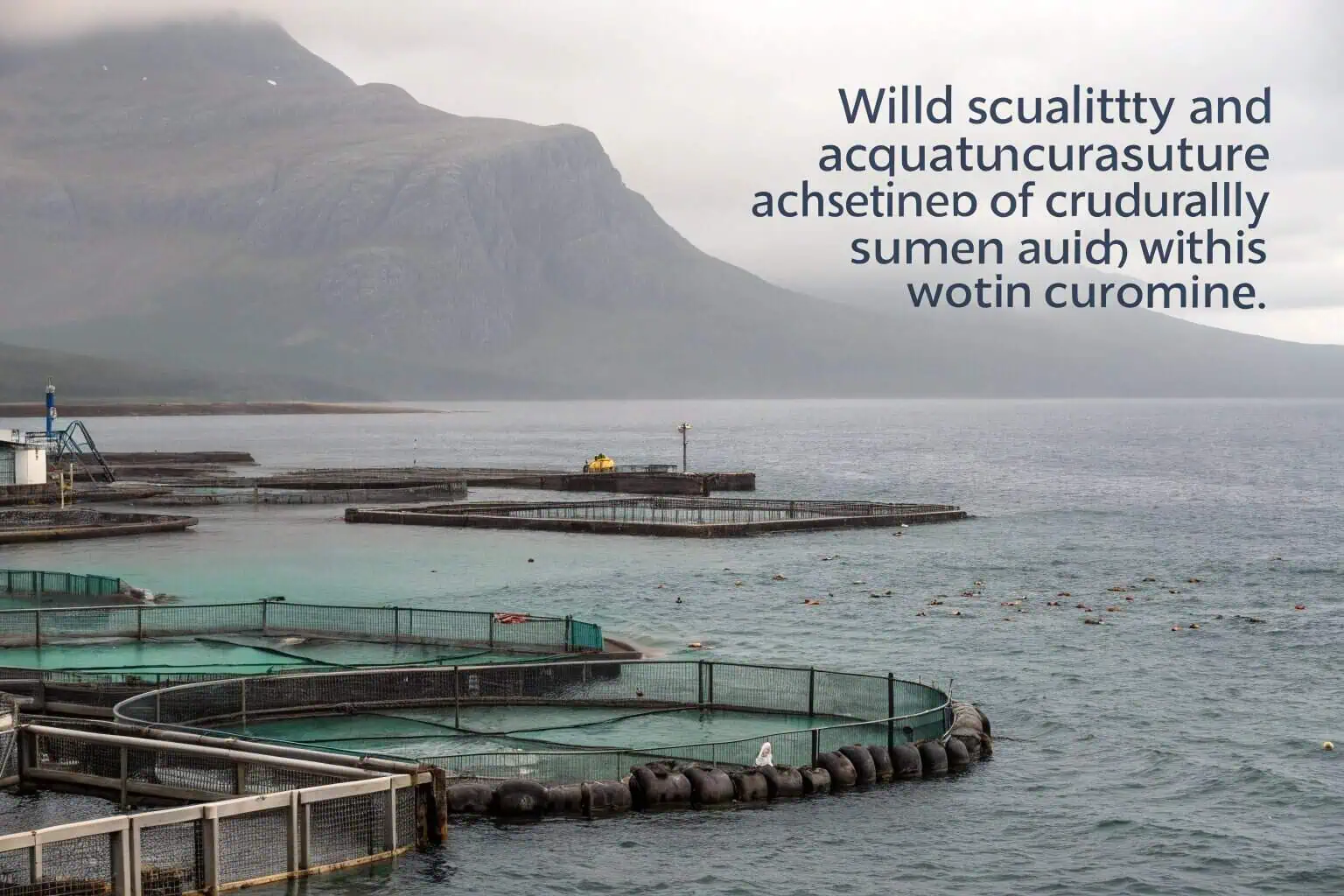
I have also seen the problems with fish farming. When too many fish are kept in one place, diseases can spread quickly. Farmers sometimes use antibiotics to stop this. But these drugs can get into the water. This pollutes the environment. It can also hurt wild fish and other animals. There is also a risk of gene pollution6. Farmed fish might escape and mix with wild fish. This can change the natural fish populations. Another big issue is feed. Many farmed fish eat smaller wild fish. This still puts pressure on ocean resources. This is different from commercial fishing. Wild fishing is more natural. But it also has its own problems. It depends on seasons and rules. This can lead to too many fish being caught. This hurts fish numbers. We need to find better ways to farm fish. We need to make sure it does not harm our planet.
Disease and Antibiotic Use
When fish are crowded in farms, diseases can spread fast. To fight this, farmers sometimes use antibiotics. This can lead to antibiotic-resistant bacteria7. It can also harm the fish.
Environmental Pollution and Gene Pollution
Antibiotics and waste from fish farms8 can pollute the water. This hurts local ecosystems. Also, farmed fish can escape. They might breed with wild fish. This can change the genes of wild fish. This is called gene pollution.
Feed Dependency
Many farmed fish need to eat other fish. This means we still catch wild fish to feed farmed fish. This puts pressure on wild fish populations. It also makes fish farming less sustainable.
| Feed Type | Source | Impact on Sustainability |
|---|---|---|
| Fishmeal9 | Wild-caught fish | Low sustainability |
| Plant-based10 | Soy, corn | Higher sustainability |
| Insect-based | Insects | High sustainability |
What is the difference between aquaculture and commercial fishing?
Do you know how fish farming is different from catching fish in the ocean? These two ways of getting seafood are very unalike. It is good to understand how.
Aquaculture is like farming on land, but with fish. It needs special places like ponds or tanks. Commercial fishing is like hunting. It takes fish from the wild ocean.
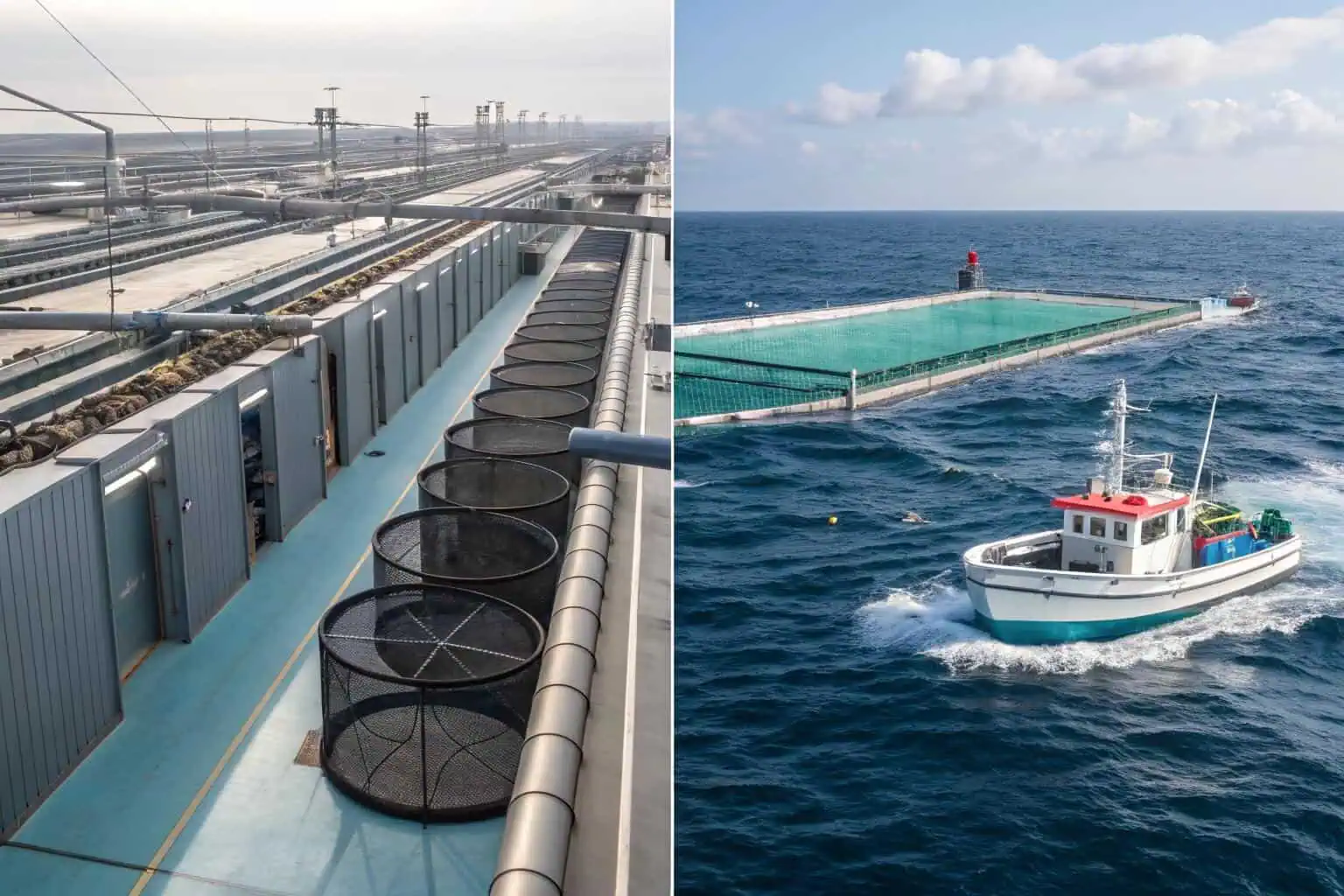
The main difference is how we get the fish. Aquaculture11 is an "agriculture" way of doing things. We build special places for fish. These can be ponds, tanks, or cages in the water. We control everything. We feed the fish. We keep them healthy. This needs money for things like fish ponds and feeding systems. For example, Bancy makes custom fish tanks. These tanks help farmers grow fish better. Commercial fishing is different. It relies on the ocean's natural resources. Fishermen go out and catch wild fish. This way is more affected by things like weather and ocean health. It can also lead to too many fish being caught. This hurts fish numbers. Aquaculture tries to make a steady supply. Commercial fishing takes what nature provides. Both have their place. But fish farming gives us more control. It helps us plan for the future. We can also choose different types of tanks.
Types of Aquaculture Systems
| System Type | Description | Advantages | Disadvantages |
|---|---|---|---|
| Pond Systems12 | Large, natural or artificial ponds. | Low cost, natural environment. | Large land use, harder to control. |
| Tank Systems13 | Indoor or outdoor tanks, often with water recycling. | High control, less land use. | Higher initial cost, more tech needed. |
| Cage Systems | Cages placed in natural bodies of water. | Uses existing water, good water flow. | Risk of disease spread to wild fish. |
This table shows how varied fish farming can be. Each system has its own pros and cons. Choosing the right one is key for success.
Controlled Environment vs. Wild Resources
Aquaculture creates a controlled environment for fish. This means farmers can manage water quality, food, and health. Commercial fishing14 depends on wild fish populations. These are affected by nature and human actions.
Investment and Infrastructure
Aquaculture needs investment in things like tanks, pumps, and feed systems. It is like building a farm. Commercial fishing needs boats, nets, and fishing gear. It is more about hunting in the wild.
What is the most profitable type of fish farming?
Are you thinking about starting a fish farm? Many people want to know which fish make the most money. It is a smart question to ask.
The most profitable fish to farm depends on where you are. In some places, Catfish and Tilapia are very profitable. In other areas, shrimp farming makes more money.
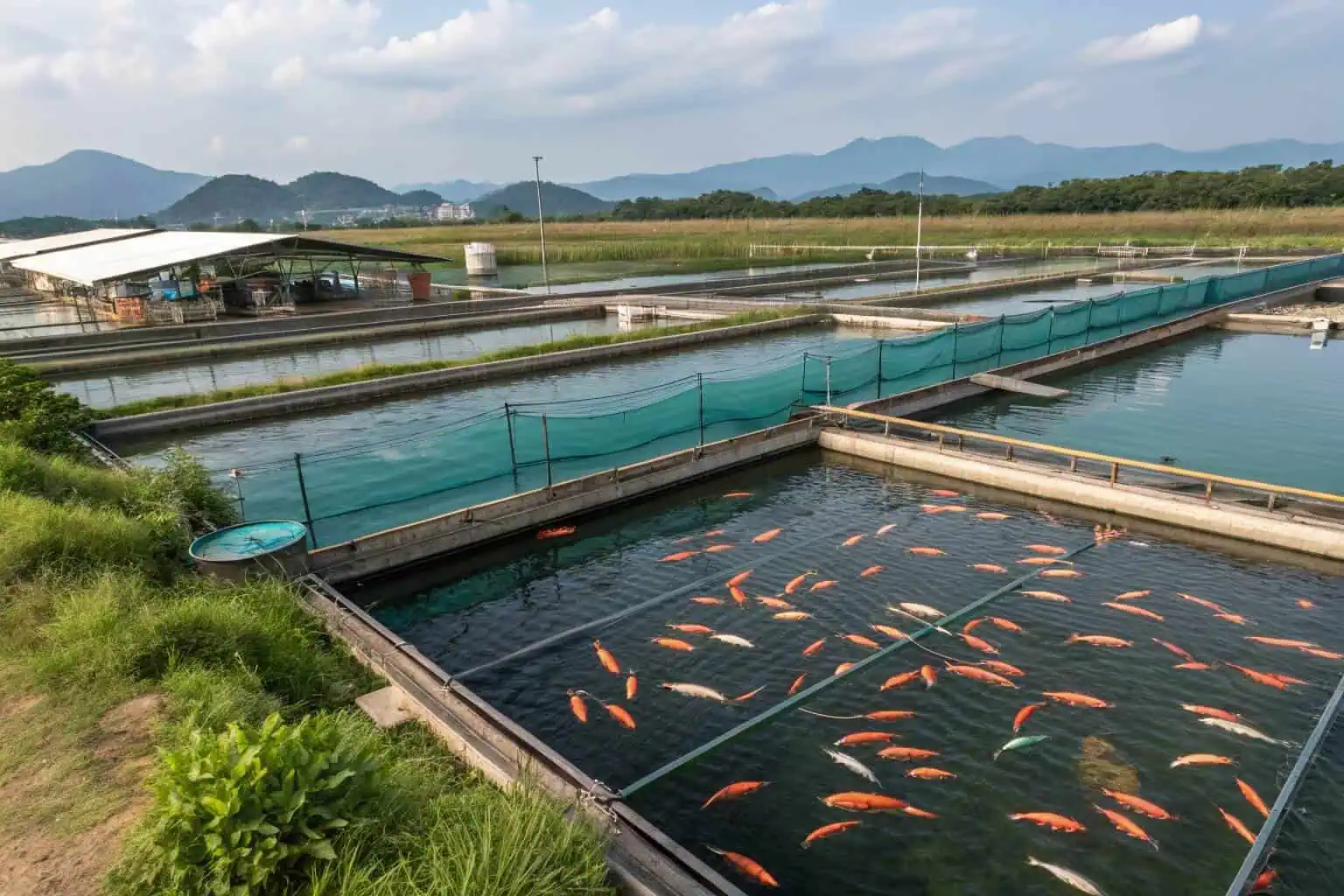
From my experience, the best fish to farm for profit changes by location. In places like the United States, Catfish and Tilapia15 are very popular. They grow fast and people like to eat them. This makes them good for business. In Asia, shrimp farming16 is often very profitable. Shrimp are in high demand all over the world. They can bring in a lot of money. For new farmers, it is important to pick fish that grow well in their area. They also need to pick fish that people want to buy. Things like water quality and climate matter a lot. Also, the cost of feed and labor plays a role. It is not just about how fast a fish grows. It is also about how much it costs to raise it. And how much you can sell it for. Custom equipment, like the tanks Bancy makes, can help. They make farming more efficient. This can lead to higher profits. It is all about finding the right balance for your market.
Regional Profitability
Profitability in fish farming changes by region. In some areas, certain fish are more popular. This means they sell for more money. For example, Catfish and Tilapia do well in the US. Shrimp farming is big in Asia.
Factors for Profitability
Many things make a fish farm profitable. These include the type of fish, how fast they grow, and how much they cost to feed. Market demand is also key. Farmers need to pick fish that people want to buy.
Custom Equipment for Efficiency
Using the right equipment can boost profits. Custom tanks17, like those from Bancy, can make farming more efficient. They help control the environment. This leads to healthier fish and better yields.
| Equipment Type | Benefit | Example |
|---|---|---|
| Custom Tanks | Better control, healthier fish | Bancy's PVC lined tanks |
| Filtration Systems18 | Cleaner water, less disease | Recirculating aquaculture systems |
| Automated Feeders | Reduced labor, precise feeding | Timed feeders |
Conclusion
Aquaculture is changing how we get seafood. It offers many good things. But it also has problems. We need to farm fish in smart ways. This will help us feed the world and protect our planet.
-
Learn how integrated systems enhance aquaculture efficiency and sustainability for better fish production. ↩
-
Explore the benefits of fish farming to understand its impact on sustainability and food supply. ↩
-
Explore this link to understand how aquaculture ensures a reliable seafood supply, supporting sustainability and food security. ↩
-
Explore the advantages of Tilapia farming, including its fast growth and high market demand, to maximize your profits. ↩
-
Discover why Catfish is a lucrative option for farmers, focusing on its rapid growth and strong consumer demand. ↩
-
Learn about the risks of gene pollution and its impact on natural fish ecosystems. ↩
-
Understanding antibiotic-resistant bacteria is crucial for addressing health risks and sustainable fish farming practices. ↩
-
Understanding this helps in assessing the ecological risks and promoting sustainable aquaculture practices. ↩
-
Explore this link to understand how Fishmeal affects wild fish populations and sustainability in aquaculture. ↩
-
Learn how plant-based feeds like soy and corn contribute to more sustainable fish farming practices. ↩
-
Explore this resource to understand the fundamentals of aquaculture and its benefits for sustainable fish production. ↩
-
Explore this link to understand how Pond Systems can be a cost-effective and natural option for fish farming. ↩
-
Learn about the advantages of Tank Systems for better management and water recycling in aquaculture. ↩
-
Learn about the effects of commercial fishing on wild fish stocks and the importance of sustainable practices. ↩
-
Explore this resource to learn why Catfish and Tilapia are popular choices for profitable fish farming in the US. ↩
-
Discover the key factors that make shrimp farming highly profitable in Asia and how it can be a lucrative option for farmers. ↩
-
Explore this link to understand how custom tanks like Bancy's PVC lined tanks can improve fish health and farm efficiency. ↩
-
Learn how recirculating aquaculture systems help maintain cleaner water and reduce disease for healthier fish. ↩